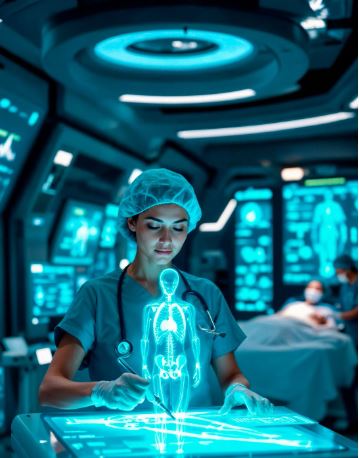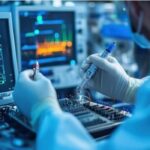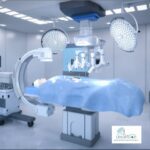How Ultrasound Machines are Transforming Maternal and Cardiac Care

Did you know that over 700 women succumbed to complicated pregnancy and childbirth in 2023? Furthermore, the global estimate of yearly cardiac arrest deaths is 4.4 million. Both are preventable causes that can be diagnosed through ultrasound machines. Thus, this indicates that the tool plays a key role in identifying the underlying problems and saving lives.
So, how do ultrasound systems support material and cardiac care? The machines act as a non-invasive diagnostic tool to capture images inside the body. Their probes (transducers) produce frequency sound waves greater than the human hearing capability (over 20KHz). These probes are placed on the skin to identify how the respective body part is functioning.
In maternal care, an ultrasound machine monitors the baby’s growth and health, as well as ensures that the mother’s body is functioning well. For cardiac purposes, the machine assesses the blood flow, chamber movement, and the heart’s function. A timely diagnosis in either care helps detect the problem for timely care and treatment.
Advancements in Ultrasound Technology
The consistent development of ultrasound machines is transforming medical imaging and patient care. Over the years, it has become more sophisticated, precise, and versatile in creating high-quality images and supporting maternal and cardiac procedures. Some of the changes that this field of medical science has seen are:
Traditional 2D to Advanced 3D/4D Imaging
Earlier, medical professionals relied on 2D images, which only produced the outlines or flat images of the internal organs.
Today, 3D and 4D have changed how doctors observe the fetus and the heart function. The 3D ultrasound visualizes the facial features and other baby body parts, while the 4D ultrasound is a moving vision of it. These processes can identify certain birth problems, like cleft palate, which cannot be spotted with 2D imaging.
The studies have suggested that 3D and 4D ultrasound imaging is safe and can help identify a problem in early stages.
Portable and AI Ultrasound Systems
The introduction of miniature, portable ultrasound machines with wireless connectivity helps reach patients who cannot visit the hospital and require immediate medical assistance.
Through the latest AI-based ultrasound machines, experts integrate algorithms into the system to reduce human dependency, improve the accuracy rate, and automate analysis.
Such technological advancements make the machines more agile to efficiently detect the risk factors early and provide maternal and cardiac care.
Easy Availability in Clinics and Hospitals
Ultrasound machines are a commonly found diagnostic tool in hospitals and clinics today. This availability has helped healthcare providers identify the current situation of the mother and child, reducing the uncertainty of pregnancy complications. For cardiac care, the easy availability means detecting early symptoms and saving the patient from a heart attack or blockage.
Role in Maternal Care
3D and 3D ultrasound systems create a moving video of the baby on the screen. It helps healthcare professionals check up on the health and identify the complications, if any. Through real-time imaging, doctors can:
Monitor Fetal Development and Identify Abnormalities
The pregnancy care provider can see the fetus in early developmental stages and figure out if everything is fine. Through advanced techniques available today, they observe if the baby is growing fine or if there are any signs of complications.
Improve Prenatal Care and Maternal Safety
Prenatal ultrasound helps assess the growth, development, and current health position of the baby. It also detects complications and any medical condition that might interfere with pregnancy or pose a risk to the mother.
Reduce Early-Stage Risks
Ultrasound is a routine checkup to see how much the baby has grown. However, in certain cases, it also helps check for early complications, such as molar pregnancy, ectopic pregnancy, or miscarriage.
Role in Cardiac Care
A heart ultrasound, or echocardiogram, uses sound waves to form images of the heart. It shows the blood flow through the heart valves and detects any signs of heart disease/other conditions.
Real-Time Images of the Heart
The standard procedure, i.e., transthoracic echo (TTE), identifies the movement of blood through different heart valves and chambers. It is generally carried out in case of breathlessness or chest pain, and involves taking live photos of the heart.
Congenital and Chronic Condition Detection
The echo test can identify if the patient is suffering from any of the following heart diseases:
Cardiomyopathy
Congenital heart disease
Infective endocarditis
Valve disease
Pericardial disease
Minimally Invasive Procedure
The sonographer inserts the probe through your throat and esophagus through a flexible tube. Therefore, a cardiac ultrasound is minimally invasive and only causes mild, temporary discomfort.
Accessibility and Global Impact
Earlier, ultrasounds used to be only present in developed nations. Even if the machines were present in low- and middle-income countries, they were only found in well-established facilities. It increased the risk of uncertainty during pregnancy and cardiac care, especially in community clinics. However, the easy accessibility of devices led to an impact on rural care.
Research on Kenya’s community clinic, Waire’s, indicates the result of the access to ultrasound machines for everyone. The team acknowledged how the machines helped healthcare professionals and midwives save old and new lives. The low-cost, portable devices increased the speed, accuracy, and convenience of the health care process.
Challenges and Future Outlook
Although healthcare professionals have access to modern and affordable machines, there are a few roadblocks to overcome:
There is a lack of operator expertise and image interpretation, especially with healthcare professionals who are new to this. This slow learning process makes it difficult to provide timely consultations and accurate solutions.
The continuous innovation in ultrasound machines involves a high upgradation cost and the struggle to keep up. This problem is especially prevalent in rural areas where adaptation is slow.
Although the struggle is real, the future potential of ultrasound machines supports preventive healthcare measures and patient-centric treatment. As the technology advances, it paves the way for systems to deliver high-quality images and accurate diagnoses so the problem can be treated before it becomes irreversible.
Conclusion
The future of ultrasound systems is transformative and innovative. From generating precise, high-quality images to detecting problems in early stages, it helps ensure patient care across material and cardiac uncertainties. These advancements hold the key to improving diagnostic capabilities and improving treatment plans. So, only rely on the most accurate and effective ultrasound machines that contribute to shaping the future of healthcare.
Ultravision Medical is a reputable medical equipment supplier in Dubai in Dubai that strives to provide the best medical equipment to clinics and hospitals, tailored to their unique requirements.



